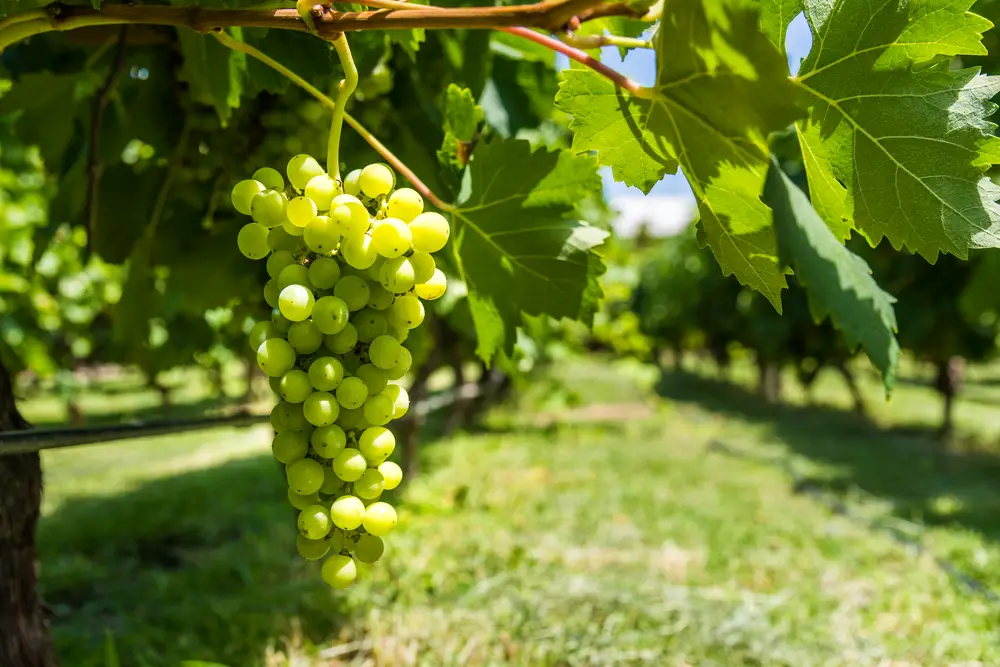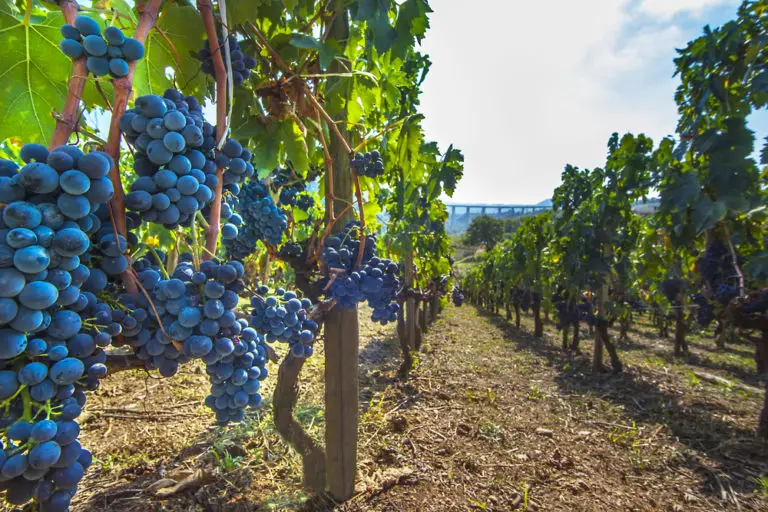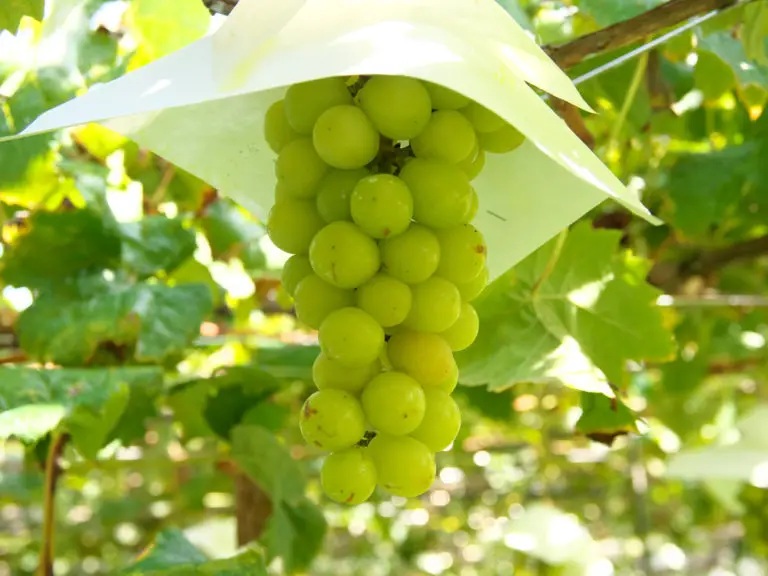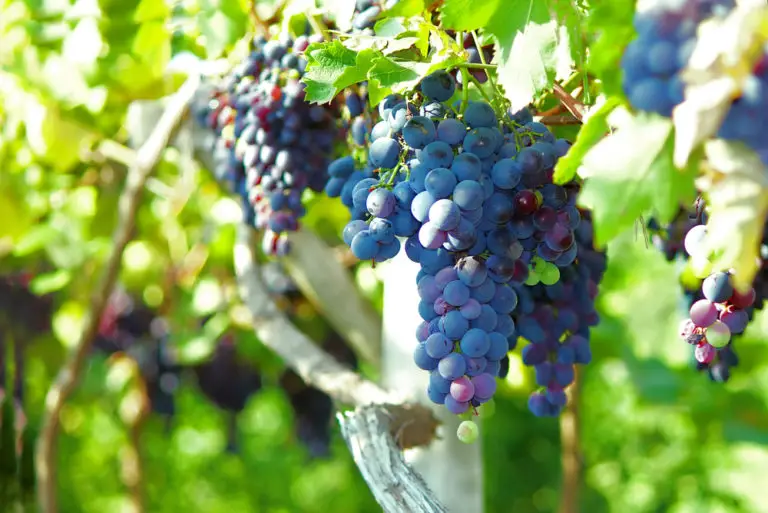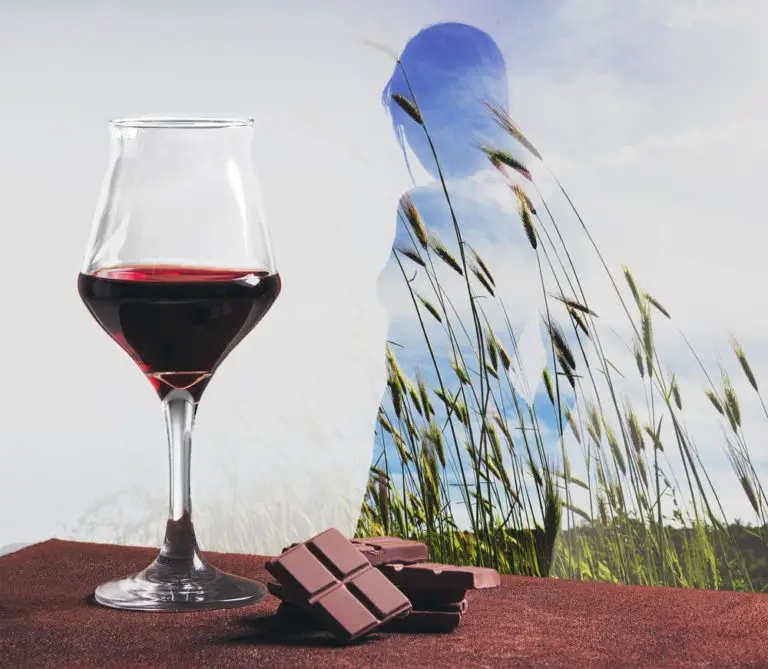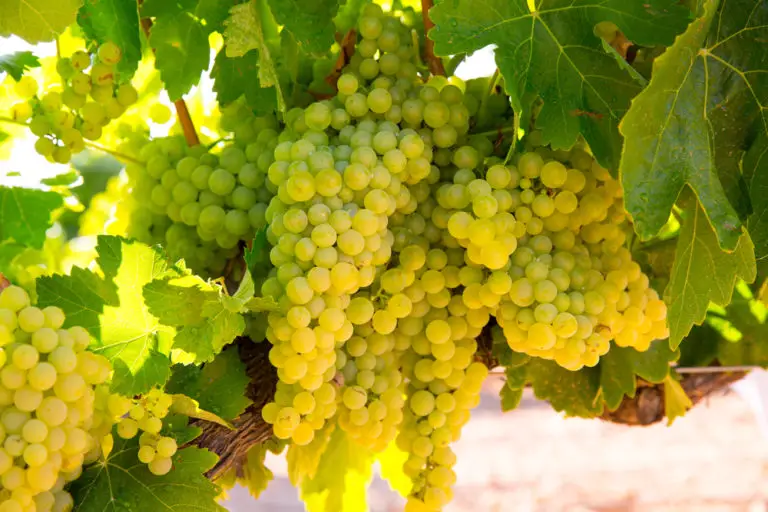Torrontes: The Beginners Guide (2024)
The Torrontes is perhaps the most interesting white wine variety of Argentina. It is known for its deliberately fruity character. This grape produces fresh, aromatic wines with a smooth texture, moderate acidity, and mouthfeel. The distinctive apricot and peach aromas on the nose make it different from other wines.
- What is Torrontes?
- Known Regions for Torrontes
- Popular Blends of Torrontes
- How to Enjoy Torrontes?
- How Is Torrontes Made?
- History of Torrontes
- Alternatives for Torrontes
What is Torrontes?
Torrontes pronunciation Tohr-ROHN-tayss is a genetic crossing between the Italian Muscat from Alexandria and a “small Creole” grape variety. Torrontes white wine is a grape with a high aroma that smells like sweet wine, but it is actually a dry, fresh wine with balanced acidity.
There are three types of Torrontes grapes in Argentina: the Sanjuanino, the Riojano, and the Mendocino. This variety of Torrontes, name Riojano, is fine and dry wines of higher quality are made.
Although the highest number of plantations of this variety are in the provinces of San Juan, Mendoza, and La Rioja (Cuyo region in Argentina), it is the province of Salta where this grape finds the best expression for its wines.
The aromatic range of wines made from Torrontes grape can include descriptors such as nutmeg, jasmine, tangerine, fresh oregano, orange peel, honey, orange blossom, pineapple, rose, manzanilla, and peach.
Torrontes vs. Moscato vs. Viognier vs. Pinot Grigio
All these are white wines made using similar techniques but are somewhat different from each other.
Torrontes is similar to other white wines like Pinot Grigio and Muscat Blanc (Moscato). The major difference between Torrontes vs Moscato, and Torrontes vs pinot grigio white wines and Torrontes is that Torrontes is a dry wine. It makes it different because its salty lean taste makes it interesting in comparison to the other wines.
Torrontes palate includes notes of both peach and citrus, along with other floral notes typical for the region where they come from. Torrontes is generally sweet with strong floral qualities that show the same balance between acidity and sugar as that of a Riesling. You can find high-quality Torrontes at a great price.
Comparing Torrontes vs. viognier, Viognier wine is higher in alcohol, richer, typically less citrus, often oak-influenced, and is usually dry. It comes with floral aromas like orange blossom or jasmine, whereas Torrontes can be in many more flavors.
Torrontes Characteristics
Torrontes wine characteristics are similar to that of their parent grapes, Criolla Chica and Moscatel de Alejandría. Most necessarily the Muscat-like aromas of geranium, jasmine, honeysuckle, and rose and its impressive yield that abounds in the glass.
Some Torrontés wines have more fruity expressions like that of orchard fruit notes and citrus fruit while others have exotic aromas of mango and lychee or even slightly mineral notes with some salinity in the mouth.
It grows well in specifically high-altitude vineyards where the nights are cooler. It helps in retaining the same acidity in this low acid variety of grape, and the wines can hold better aromas.
Torrentes Argentina may become flabby in warmer regions. The best Torrontes white wines are always refreshing and crisp. Exotic fruity and floral notes and light to medium-body make Torrontes great wine for warm days.
Torrontes Taste Profile
Torrontes Riojano is an aromatic white wine that has a dry, crisp, and refreshing taste. This wine has balanced sweetness and acid levels. It is one of Argentina’s most extensively cultivated white grapes. Its planting takes place from Chubut in the far south to Jujuy in the extreme north.
Torrontes Sanjuanino shares Torrontes Riojano’s characteristics of loose and large clusters of highly aromatic berries. It is the middle child of the family famous for its perfume and Torrontes flavor of peach, apricot, honey, rose, melon and is characterized by citrus-like acidity and minerality.
Yet another category from the Torrontes family is Mendocino. It is also known as the black sheep of this family. It is because of the uncertainty with the relation to other Torrontés varieties. Muscat of Alexandria is the parent, and it has notably tighter and smaller bunches. This Torrontes profile aromas are also muted.
Torrontes Ageability
The wine develops and evolves with time, changing the Torrontes flavor profile, aroma, and color from what it was initially bottled. It is, in fact, interesting to see the transformation of wine with time and its role as a souvenir of a particular year. Souvenirs pay a lot of money to buy such rare wines that have been aged for a long time. But, not every wine is supposed to be aged.
Typically, the age of white wine is determined by various factors like grape variety, microclimate, fermentation and barrel techniques, fruit levels, and soil types. Most wines are made to be consumed within two or three years of bottling. There are few exceptions to this, like chardonnay, Roussanne, and Burgundy.
The biggest clue to a wine’s age is its crackling acidity. Unlike other crisp white wines, Torrontes does not tend to get benefits from lengthy bottle aging. It is best when consumed young.
Known Regions for Torrontes
Argentina is, of course, the country where Torrontes are grown. The best varieties specifically come from Cafayate Valley, a region of Salta.
The unique cold, dry and windy climate of this Torrente’ region with very little rainfall helps in providing a wide array of aromas to the wine while keeping it acidic and not making it too rich in alcohol.
Most vineyards here are located at more than 1500 meters above sea level, and some at up to 3000 meters. Torrontes meaning Riojano is planted in around 8700 hectares in Argentina, and Sanjuanino in approximately 4850 hectares.
It is also grown in Chile and is known as the synonym Moscatel de Austria. It is widely produced by the Chilean brandy wine called Pisco. Torrontes from other places like Mendoza and San Juan are best suited for early consumption. Argentina White wine Torrontes are capable of producing high-quality wine. The success of the wine depends on the skill and care provided by winemakers and the vine yields.
Popular Blends of Torrontes
Torrontes blends from Argentina have been on the rise, especially the white wines. There is a wide range of white wine varieties available, particularly famous from the Uco Valley.
Susana Balbo, White Blend 2016
Balbo is known to be the Queen of Torrontes, along with the addition of Sauvignon Blanc and Semillon to improve the palate. This blend has bright citrus and blossom notes. The richness from the barrel-aging, thirst-quenching mineral note and acidity, similar to Altamira makes it special.
Amalaya, Calchaqui Valley
It is a blend of Torrontes ingredients and Riesling grapes grown on the Finca San Isidoro vineyards. It is grown in one of the highest wine regions in the world and the Cafayate Valley in the very heart of the Calchaqui Valley.
The rocky and poor sand forces the vines to dig deep to find water and nutrients, resulting in a huge concentration of flavor within the fruit. It has intense citrus and floral aroma with a touch of minerality. It has a crisp acidity with a long, fruit-driven finish on the palate.
How to Enjoy Torrontes?
The best way to enjoy any wine is by pairing it up with the right food, serving it at the ideal temperature, and using correct stemware. It enhances the aroma and flavors, and the characteristics of Torrontes or perhaps any wine. Let’s have a look at Torrontes pairing and ways to serve it ideally.
Food Pairings
Torrontes makes an amazing pair with a variety of food. Dry style wine pairs well with classic foods like chicken and fish, while the sweeter wine goes perfectly with spicy foods.
Dry Torrontes wine is best enjoyed with food that is light and delicate. The flavors of the food must match the intensity of this very aromatic white wine. Some excellent Torrontes food pairing is:
- Ceviche
- Pizza Bianco
- Avocado toast
- Pancetta/Bacon
- Vegetarian empanadas
- Feta and watermelon salad
- Shrimp pasta
- Tuna tartare
- Grilled chicken with greens
- Sushi
- Sauteed greens with lemon dressing
- Saffron risotto
- Poke
- Grilled calamari
Off-dry to medium-sweet style Torrontes wine Argentina can cool down the flavors of spicy food but still goes well with lighter proteins like chicken, fish, and pork. It also goes well with fruity desserts. Some recommendations for excellent pairing:
- Cajun-style salmon
- Szechuan chicken
- Sweet potato fries
- Shrimp and pineapple skewers
- Goat cheese
- Fruit tarts/fruit-based desserts
- Jalapeno poppers
- Mango chicken curry
- Pad Thai
- Chicken Korma
- Spicy stir-fried tofu
Temperature
White wines are best served chilled but not really cold. The same is the case with this Argentinian wine. It should be the coolest wine that you can imagine, but not icy. Also, it should not be served straight from the refrigerator. One should always take the wine out and let it sit for 10 to 15 minutes before serving. The ideal Torrontes temperature is 6-9 degrees celsius. Chilling it more will mask the flavor of the wine.
Stemware
A medium-sized bowl glass having a tulip-shaped rim will be the ideal stemware for Tonrrontes. The shape of the glass makes the tip of the tongue curve up unconsciously. It makes the stream of the wine delivered directly to the concentrated sweetness-sensitive taste receptors. It emphasizes the flavor, and also, it integrates the acidity pleasantly into fruity and floral flavors.
This delivery ensures that the wine moves onto the back palate to give it a long balanced finish without coming in contact with sourness-sensitive edges of the tongue. It will also bring out the optimal aromas, Torrontes wine taste, and overall expression of the wine.
How Is Torrontes Made?
Torrontes wines are made using the same process as any other white wine. This process involves multiple steps:
Harvesting
Torrontes are first harvested from the vineyard. In most cases, they are hand-harvested. Winemakers generally wait for the fruits to ripe and extract them at the correct time.
Press the grapes
Picked grapes are then passed through a winepress in which the skin and other substances are removed and the juice is squeezed. Grapes also receive sulfur dioxide to stop bacterial spoilage before the fermentation starts.
Let the juice settle
The juice is allowed to sit for a while. It will settle down any suspended solids that could contribute to the bitterness of finished wine.
Alcoholic fermentation
This process is generally for 14 days. White wines are generally fermented at a cooler temperature to preserve delicate floral aromas. It is done in a closed tank to burn off all those delicate aromas.
Clarifying the wine
In this step, the winemakers add “fining” or “clarifying” agents to remove any suspended proteins in the wine that makes it look cloudy. Once this is done, bottling and labeling take place.
History of Torrontes
Initially, it was thought that Torrontes riojano from Argentina and Torrontes from Spain were the same until DNA testing on Torrontes riojano was completed in 2003.
It was only after the test that they were found to be genetically different grapes. Torrontes riojano is the only variety that is 100% native Argentinian and is gaining popularity across the globe.
Torrontes origin is believed to be dated back to the 1500s by Spanish Conquerors. It has been going strong since then. Approximately more than 8,180 hectares of Torrontés riojano are planted in Argentina, and the number is still growing.
Alternatives for Torrontes
If you do not have access to Torrontes wine, you can try these alternative white wines instead. They have similar palates, aromas, and textures that will give you the same feel as Torrontes. Dry Riesling, Albariño (a light, acidic wine), White muscat wine (sweeter), and Viognier are good alternatives to Torrontes.
Dry Riesling
The best alternative to the Torrontes is the dry German riesling. Riesling is sweet or dry, more acidic having mineral tones. If the ABV on the bottle clocks in at over 11%, then it is a dry Riesling. It is versatile with pairing applications and its grippingly high acid levels. It pairs well with an array of fried or spicy foods, balancing complex flavors with its mineral profile, rich and layered fruits.
White muscat wine
This oldest variety makes a great alternative to Torrontes. White Muscat is grown around the world and has over 200 different varieties known today. It is sweet and fruity with a musky, rich aroma. The grapes grown in Spain and Portugal are typically fortified and sweeter. This wine is usually partnered with dessert.
Viognier
Viognier is a white wine grape variety that is the only permitted grape for the French wine Condrieu in the Rhône Valley. Depending on how it is made, it will range in intensity from light and spritzy with a touch of bitterness to creamy and bold. Its primary aromas are dominated by flowery smells of rose petals and exotic perfume.
FAQ
What is Torrontes wine similar to?
Torrontes is similar to other aromatic white wines. The most similar wines are Dry Riesling, Viognier, Albariño (a light, acidic wine), and white Muscat Blanc (Moscato).
Is Torrontes a white wine?
Yes, Torrontes is a white floral, tropical-tasting wine. It is the most distinctive of all Argentine wines because Argentina is the only country to produce them.
Is Torrontes a grape varietal?
Torrontes is a white grape variety mostly produced and known in Argentine wine. It produces aromatic, fresh wines with moderate acidity, smooth texture, and distinctive apricot and peach aromas on the nose.
Is Torrontes a dry wine?
Torrontes smells sweet, but it is usually dry. It is a fresh and aromatic wine that thrives in high-altitude vineyards composed of alluvial, sandy soils.

